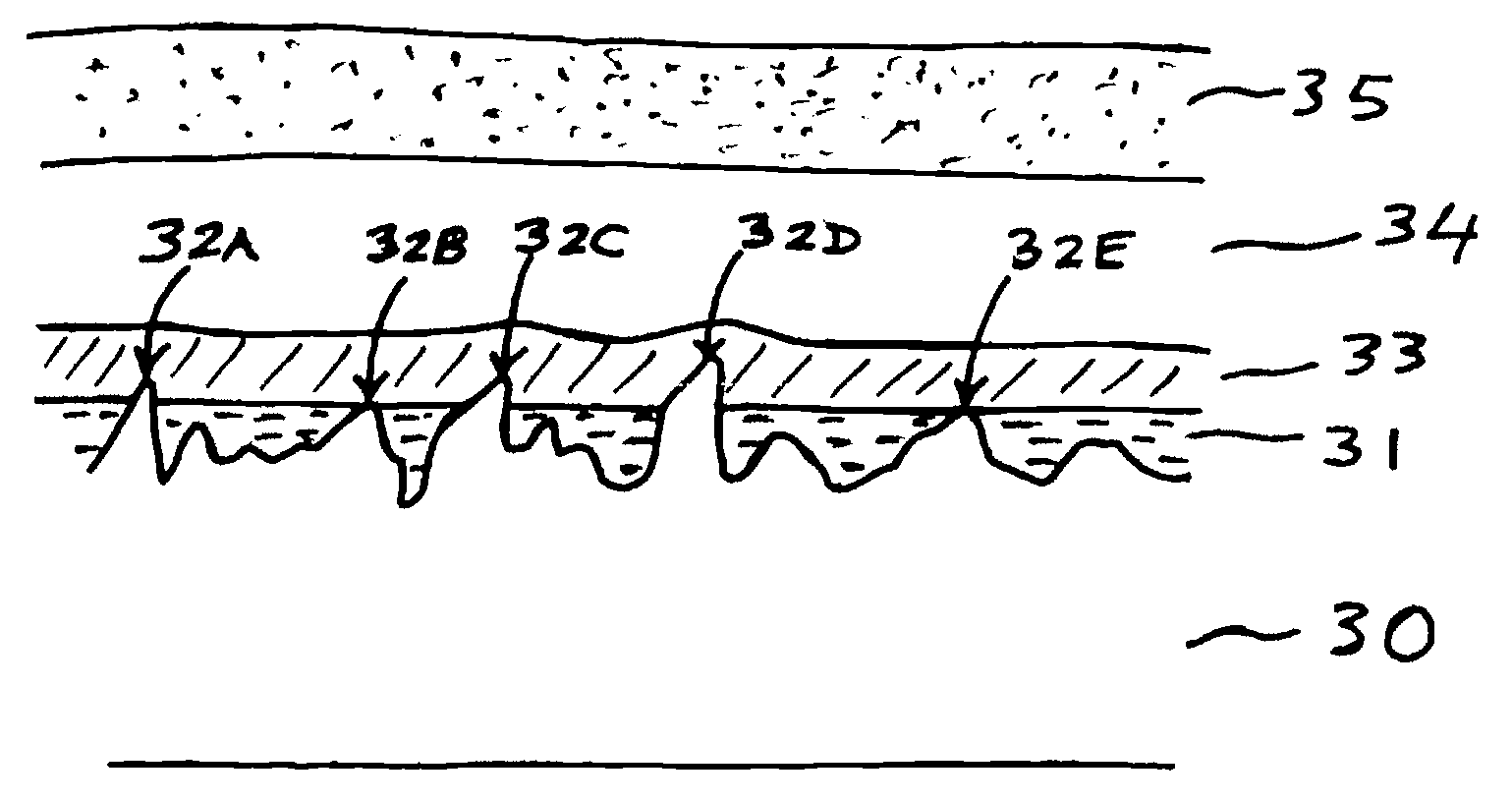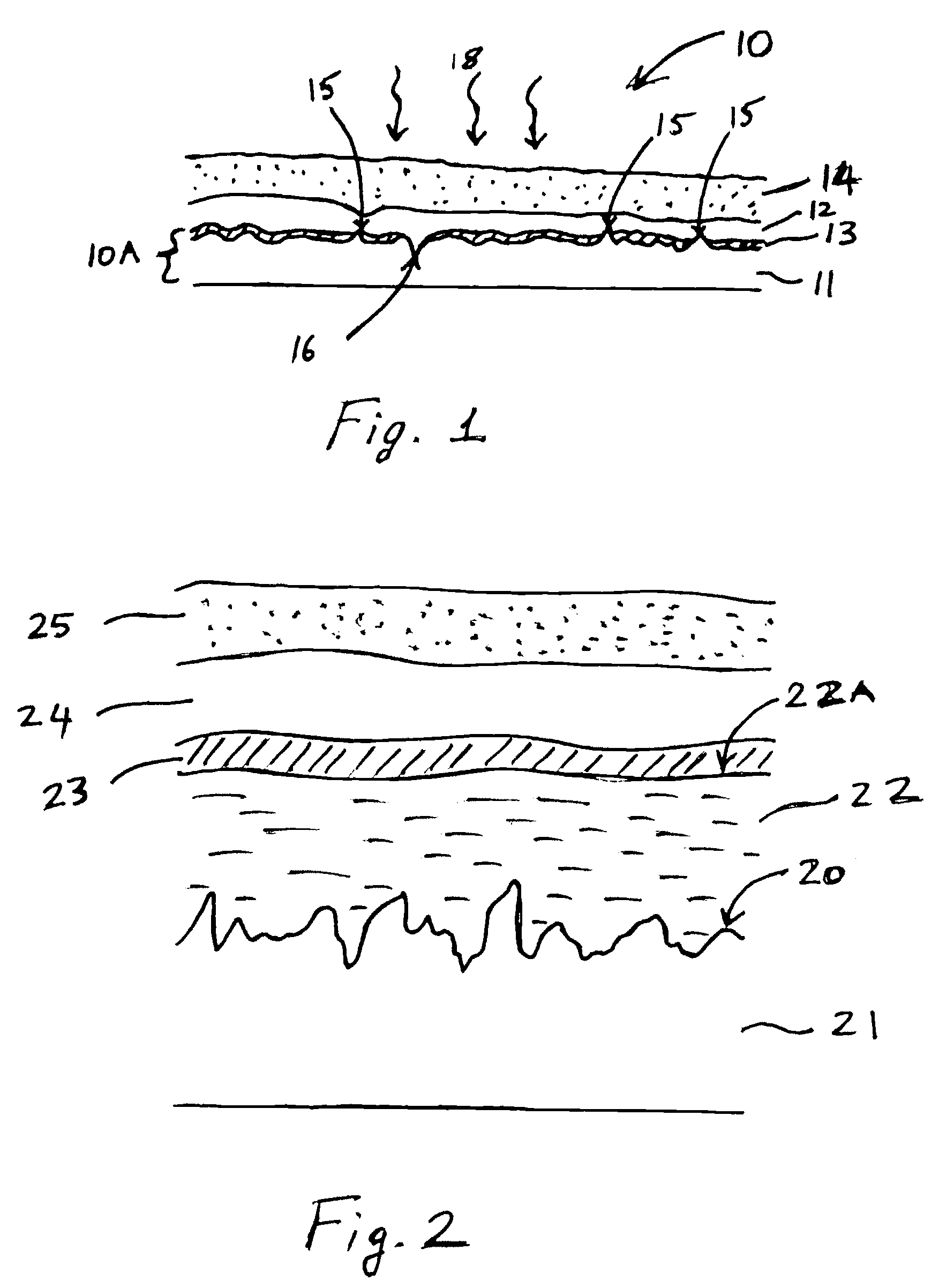Substrate preparation for thin film solar cell manufacturing
a technology of conductive foil and substrate, which is applied in the manufacture of final products, coatings, basic electric elements, etc., can solve the problems of reducing the efficiency of devices, reducing the adhesion of mo to the substrate, and reducing the effective series resistance of devices.
- Summary
- Abstract
- Description
- Claims
- Application Information
AI Technical Summary
Benefits of technology
Problems solved by technology
Method used
Image
Examples
Embodiment Construction
[0018]Embodiments of present inventions provide a flexible foil base that enhances the efficiency and manufacturing yield of flexible II-VI compound semiconductor solar cells, i.e. Group IIBVIA thin film solar cells such as CdTe solar cells and Group IBIIIAVIA thin film solar cells such as CIGS(S) type solar cells. The preferred solar cell structure is a Group IBIIIAVIA thin film solar cell which will be described below.
[0019]The base of the thin film solar cell includes a highly conductive metallic substrate that is surface treated using a process that employs an insulating or high resistivity and permanent buffer film to cover the surface of the metallic substrate while the protrusions such as peaks or spikes on the surface are exposed to provide conductivity. Although the embodiments will be described using a CIGS solar cell as an example, it will be appreciated that any flexible thin film solar cell employing a Group IBIIIAVIA compound semiconductor absorber film can be used. In...
PUM
| Property | Measurement | Unit |
|---|---|---|
| Temperature | aaaaa | aaaaa |
| Thickness | aaaaa | aaaaa |
| Flexibility | aaaaa | aaaaa |
Abstract
Description
Claims
Application Information
 Login to View More
Login to View More - R&D
- Intellectual Property
- Life Sciences
- Materials
- Tech Scout
- Unparalleled Data Quality
- Higher Quality Content
- 60% Fewer Hallucinations
Browse by: Latest US Patents, China's latest patents, Technical Efficacy Thesaurus, Application Domain, Technology Topic, Popular Technical Reports.
© 2025 PatSnap. All rights reserved.Legal|Privacy policy|Modern Slavery Act Transparency Statement|Sitemap|About US| Contact US: help@patsnap.com



